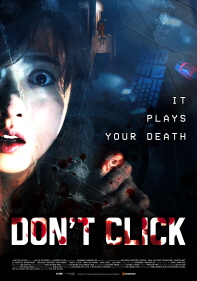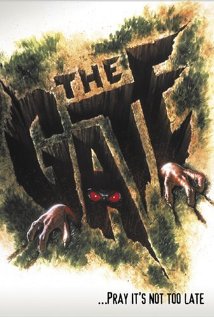 Dir. Robert Eggers, 92 min., In Theater
Dir. Robert Eggers, 92 min., In Theater
Can a contemporary film address the tired genre of New England witch films? Robert Eggers makes his directorial debut banking on the fact that he has brought something new to the genre, and while his film executes on a number of levels, strength of story is not one of them.
Overly-proud town preacher William (Ralph Ineson) is banished along with his family due to a disagreement with the corporation of his 17th century New England settlement; the exact nature of the offense is only vaguely hinted at, but he seems to be a bit of a holier-than-thou type. William’s homesick wife, Katherine (Kate Dickie), grows bitterly resentful as they trudge to the edge of the woods with their young children, the youngest of which is not long for the world and whose loss throws her into a deep depression.
Their children, the teenager Thomasin (Anya Taylor-Joy) and her younger brother, Caleb (the aptly named Harvey Scrimshaw), function as something of surrogates for their parents: the boy learning the ins and outs of trapping and preaching, the girl assuming the duties of the mother on the homestead including child care (despite the disastrous loss of the aforementioned baby while under her care).
Early in the film, it becomes clear that this is not a metaphorical witch in the ilk of Miller’s Crucible, nor is it the never-seen phantasmagorical witch of The Blair Witch Project. This is your straight up, child-stealing ancient hag, casting black magic in her hovel and running naked through the forest. The closest comparison characters I can summon are the witches in Roman Polanski’s Macbeth (1971), where there’s nothing glamorous or seductive about the witch lifestyle (at least not without some appealing supernatural artifice).
That interpretation of the witch folklore seems to match the grinding punishment and defamiliarizing nature scenes through which the family must persevere. Although they wake up on the first day of their banishment covered in mud and swarmed with mosquitos, one quick cut later they are living in a finished house with a bustling farmstead replete with goats, chickens, and a nearly finished barn. That scene of domesticity is quickly interrupted by the tragedy of the lost child, transporting the family into an panoply of migrant fears (most of which are better represented in Terrence Malick’s The New World). Then settles in the daily grind of settlement life: the crops are failing, food is dwindling, and the bleak grayness of winter looms like a specter.
The film looks really sharp, with a number of well-shot reaction close ups that amplify the horror scenes. Eggers clearly paid attention when watching his Kubrick, borrowing the atonal wailing chorus of 2001: A Space Odyssey to supplant diagetic sound as characters encounter their worst fears. There are not many traditional jump scenes, the director instead focusing on creating an uneasy vibe that matches the strangeness of the archaic speech patterns and bizarre religious incantations (I find Puritans to be an inherently creepy set– nothing sets up a suspense film like tightly-wound fanatics). Likewise, Eggers really brings out the horror of the natural world, whether through a dead animal or the numerous ways that nature is dispassionately at odds with our survival.
All that being said, the film fails to deliver on any real subtext. Each of the characters had a particular sin that they were punished for: pride, wrath, lust, etc. Had the punishments matched the crime in more instances, I would have seen the subtext: the devil and hell are real and we are all punished accordingly for our mortal sins (though I might have slammed the film for being too obvious then). Another possible outlet was the concept of original sin, which is certainly touched upon in the film, but slowly fades away as the film progresses.
The devil certainly assumes the role of nature run roughshod over these suffering settlers, yet I can’t help but find the representations to be painfully obvious. A witch that presents as a “secret, black, and midnight hag,” skittering around the woods with her familiars, doesn’t do much in terms of bringing something exciting to the genre. Neither do the sometimes obvious representations (the devil as a goat, the so called “devil’s book” as a literal book, etc.). The period settings are very of-the-period, and the gross outs are super gross, and it’s not exactly as if the plot beats were telegraphed; it’s just that everything I expected to happen eventually happened ten minutes later. There were no “left turns” or “curve balls” or whatever you want to call them. It’s a damned shame the film didn’t come out in the fall around Halloween, when you could leave the theater to crisp air and barren trees instead of chattering birds and sprouting buds.
Perhaps my disappointment with this film rests with the fact that some of the best “dark woods as devil’s domain” films I can think of off the top of my head do something brand new with the genre: Evil Dead 2, Blair Witch Project, Cabin Fever, Cabin in the Woods. There’s more meta-level commentary on the genre in those films, and this film is sorely in need of some tongue-in-cheek moments to break up the grim Puritan vibe. It’s taken so seriously that there’s a title card at the end of the film slapping you in the face with the writer/director’s historical research.
My final verdict is that while this is a well-researched, well-shot, well-produced film that looks and sounds great, it really can’t breathe any life into the witch genre because, in the end, it champions utilitarian execution to the exclusion of insightful commentary on the genre. It feels like the gritty, modern, ultra-serious remake to a campy 1950’s thriller that doesn’t exist.
RT: 89%
AV: B+
IMDB: 7.4
Me: B-



 Dir. Tae-kyeong Kim, 91 min., Korean with English subtitles, at the Chicago International Film Festival
Dir. Tae-kyeong Kim, 91 min., Korean with English subtitles, at the Chicago International Film Festival Dir. Drew Goddard, 95 min., In theaters
Dir. Drew Goddard, 95 min., In theaters Dir. Tibor Takács, 85 min., Netflix Instant
Dir. Tibor Takács, 85 min., Netflix Instant